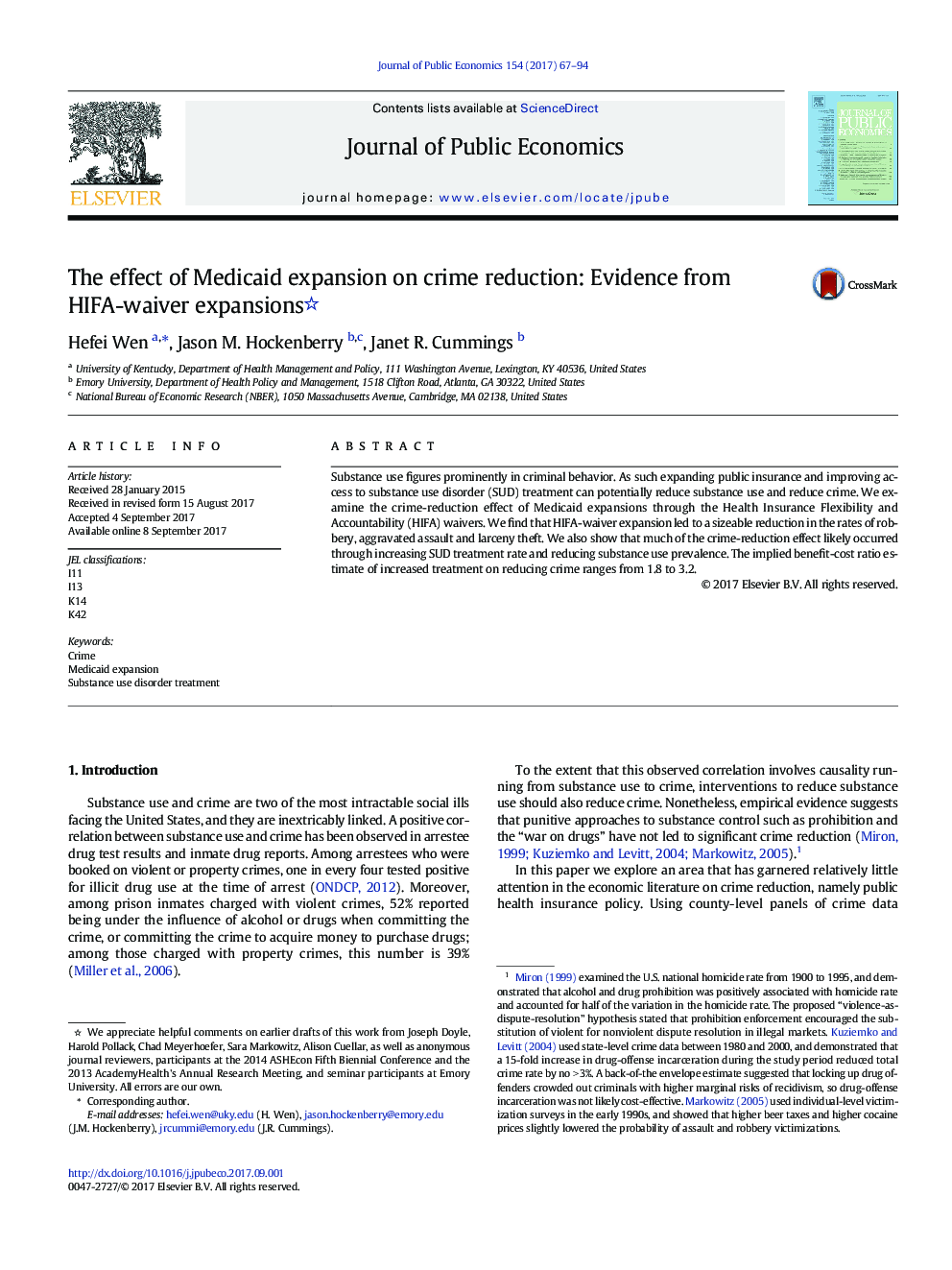| Article ID | Journal | Published Year | Pages | File Type |
|---|---|---|---|---|
| 5101757 | Journal of Public Economics | 2017 | 28 Pages |
Abstract
Substance use figures prominently in criminal behavior. As such expanding public insurance and improving access to substance use disorder (SUD) treatment can potentially reduce substance use and reduce crime. We examine the crime-reduction effect of Medicaid expansions through the Health Insurance Flexibility and Accountability (HIFA) waivers. We find that HIFA-waiver expansion led to a sizeable reduction in the rates of robbery, aggravated assault and larceny theft. We also show that much of the crime-reduction effect likely occurred through increasing SUD treatment rate and reducing substance use prevalence. The implied benefit-cost ratio estimate of increased treatment on reducing crime ranges from 1.8 to 3.2.
Related Topics
Social Sciences and Humanities
Economics, Econometrics and Finance
Economics and Econometrics
Authors
Hefei Wen, Jason M. Hockenberry, Janet R. Cummings,
